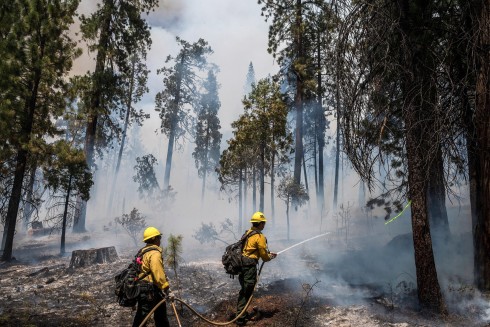How distorted insurance pricing obscures customers’ climate risks

Risk-sensitive insurance prices should play a critical informational role in climate adaptation. Accurately priced premiums should guide households about local risks and influence their behaviour towards risk mitigation — for example, prompting them to relocate to lower-risk areas or to build homes that are more disaster-resilient.
But, in reality, state-level regulation of insurance premiums in the US creates persistent cross-subsidies and distorts pricing. This undermines the extent to which insurance prices can influence climate adaptation and raises numerous other challenges for policymakers, insurers and consumers.
Imagine you are a homeowner in Virginia. Given where you live, you may feel relatively insulated from devastating wildfires plaguing distant California. You think insurance premiums in California must be very expensive. In practice, when wildfires ravage California, it is the homeowner in Virginia who ends up shouldering a significant share of the financial burden.
Our research into the $15tn homeowners’ insurance market finds this phenomenon is a result of state-level price regulation, a pervasive feature of the market. California is highly regulated and it is hard for insurers to change their rates there. Virginia is less regulated, and insurers end up raising premiums as a result, in effect cross subsidising their operations in California with those in Virginia. Over time, these behaviours have led to a growing disconnect between premiums and risk, with insurance premiums least reflective of risks in the most regulated states.
Insurance premiums are subject to extensive regulations in US states. We identified those with more onerous regulations using official filings. We then examined insurers’ pricing behaviour by comparing zip codes along state borders that have different regulation but near-identical underlying risk exposures.
FT Business School Insights: Sustainability

Research by leading professors, features and academic and business opinion. Read the report here.
The conclusion is that, in more regulated states, insurers adjust premiums less frequently and by a lower magnitude after experiencing losses. Instead, they increase premiums in less regulated states. In other words, a large subsegment of households ends up not paying a fair price for their insurance. These cross-subsidies are particularly high in states that have less competitive insurance markets, suggesting that more competition would alleviate the pricing distortions.
While it is common to see cross-subsidies in publicly provided insurance — such as flood insurance in the US and UK — such large subsidies are surprising in a privately administered market. They have far-reaching consequences.
First, households are theoretically likely to learn about their local risks from insurance prices. Arguably, insurers are better equipped to assess these risks than consumers, given their access to big data and sophisticated climate models. But when prices do not reflect risks, this learning process breaks down and could give rise to distorted incentives. For example, we may see low insurance prices leading to more construction in risky places, which may inflate real estate prices in those areas.
Second, the disconnect between prices and risk foreshadows insurers’ potential responses to rising climate risks. They may exit certain markets or eliminate important product features. We find small insurers have already begun leaving highly regulated states.
This trend has intensified in recent years with large insurers following suit: for example, Allstate, Chubb and AIG sharply scaled down operations in California citing onerous price regulation. We question whether the current regulatory landscape is sustainable in the long term, particularly as the frequency and severity of natural disasters is increasing.
The policy implications of these findings for regulators are complex. On one hand, all state regulators could adopt equally strict measures to address the cross-state distortions in prices and maintain affordable insurance premiums across the country. But this can end up stifling the insurance industry as more insurers exit.
On the other hand, eliminating regulations altogether could lead to soaring insurance prices with far-reaching consequences for real estate markets, housing development and state budgets.
Ultimately, regulators are trying to strike a fine balance between two crises brought about by intensifying disaster losses: those of affordability and availability of insurance. This is not a simple problem to resolve. But, as the insurance sector’s role in managing climate risk grows more critical, understanding the trade-offs will become increasingly vital.
Ishita Sen is an assistant professor in the Finance Unit of Harvard Business School. She is the author, with Sangmin Oh and Ana-Maria Tenekedjieva, of Pricing of Climate Risk Insurance: Regulation and Cross-Subsidies (2021, SSRN), which won the European Finance Association 2022 Best Paper Prize in Responsible Finance
This story originally appeared on: Financial Times - Author:Faqs of Insurances





























